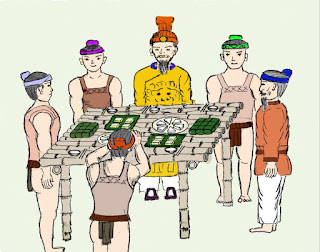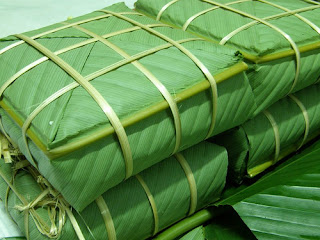 King Hung Vuong VI, after having defeated militarily, in the year of year of Chinese, who had never ceased in the past to annoy and attack, the country enjoyed peace and the king wanted cede the throne because he felt he was too old. He thought that his children were all very intelligent, strong and talented and he could not make a decision in favor of one or the other. After discussions with his advisors and his entourage, he called all his children and said:
King Hung Vuong VI, after having defeated militarily, in the year of year of Chinese, who had never ceased in the past to annoy and attack, the country enjoyed peace and the king wanted cede the throne because he felt he was too old. He thought that his children were all very intelligent, strong and talented and he could not make a decision in favor of one or the other. After discussions with his advisors and his entourage, he called all his children and said:Spring is approaching, I want to make a special presentation to thank the heavens and the earth and the prince who has offered the most delicious dishes, the one who has made those with the most sense in relation to this event will take the throne.
This order is issued, each prince assisted their mother to find the best recipe and choose the best ingredients to make dishes from King to take the throne.Prince Tiêt Lieu had no mother to help him and was very bored. Tiêt Lieu asked God to help him and dreamed that God told him:
I advise you to take ground glutinous rice to make rice cakes round in shape. There is banh Dâ the symbol of heaven.
Then take the sticky rice and mix with mung beans and meat and roll the mixture into a square sheet Dong, Banh Chung is the symbol of the Earth and the Parents.
Rice is daily food and essential, it is very precious and very good. Used in the manufacture of food, it allows to show all the particular virtues.
The king tasted it and found the dishes Tiet place very good, exceptional and easy to do. He found it smart and he attributed the throne Tiet Lieu, who became King Hung Vuong VII. Subsequently, the coming of each Tet, the new king-Lieu Tiêt encouraged the people to make these cakes in recognition of heaven and earth.







 9:24 AM
9:24 AM
 hoianboutiqueresort.com
hoianboutiqueresort.com































